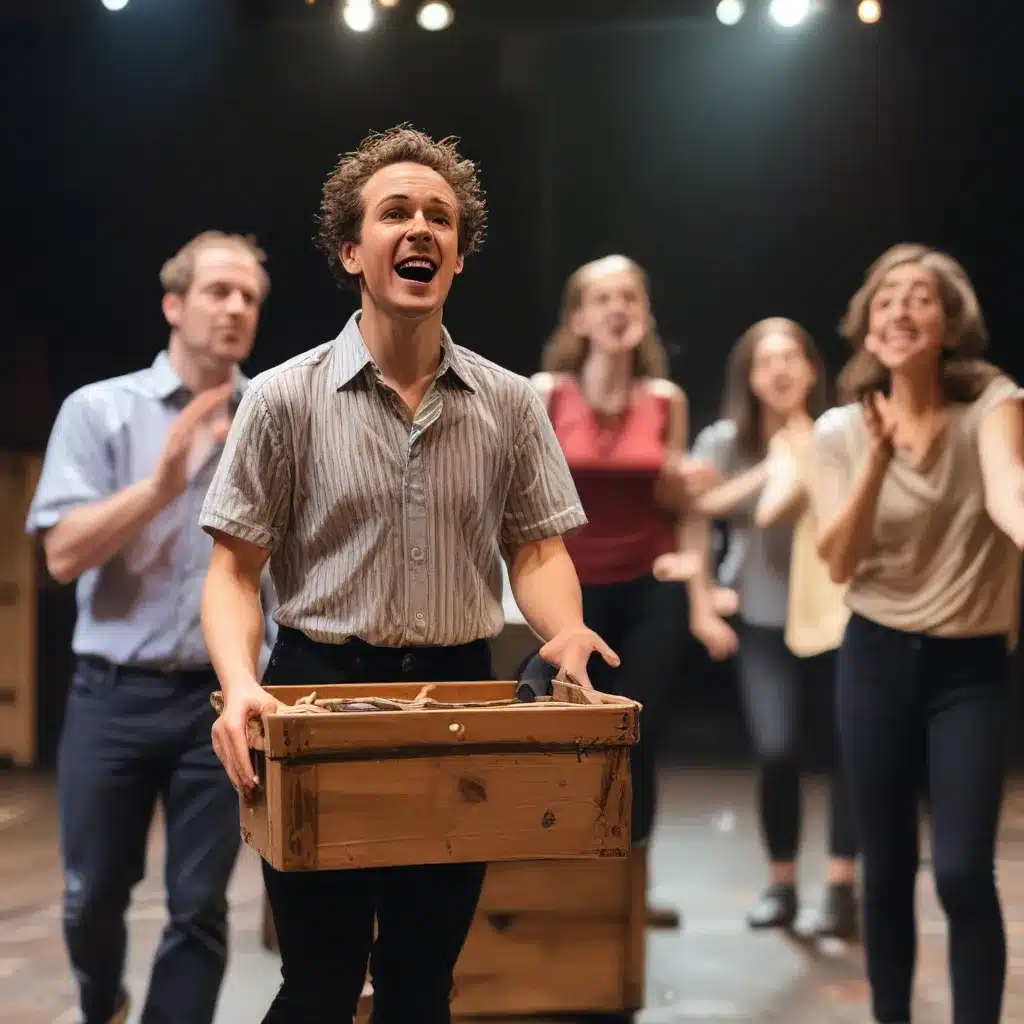
Improvising Like the Greats
You know, when I first started learning how to improvise, I was completely lost. I mean, there was just so much information out there, it felt impossible to figure out where to even begin. But you know what? If I could go back and start all over again, I’d do it the exact same way the greats of this art form did it – by immersing myself in the music and figuring it out through deep listening and relentless practice.
See, the thing is, the jazz legends I look up to, they didn’t have all the fancy resources we have today. No Real Books, no play-along tracks, none of that. They learned the language of jazz the old-fashioned way – by listening to their heroes, figuring out what made their playing so captivating, and then finding their own unique spin on it.
And that’s exactly what I encourage you to do as well. Forget about trying to learn from books or instructional videos for now. Instead, dive headfirst into the recordings of the greats. Listen constantly – on your commute, while you’re working out, even when you’re just doing chores around the house. Fill your head with the sounds that inspire you the most.
As the jazz experts at JazzAdvice say, “The true answers to all of your jazz improvisation questions are on the recordings of the great masters.” So that’s where I want you to start. Immerse yourself in the music, and let it seep into your bones.
Unlocking the Secrets of Jazz Improvisation
Now, I know what you’re thinking – “But wait, don’t I need to learn a ton of music theory and scales to be able to improvise?” Well, yes and no. Theory and scales are definitely important tools in the improv toolbox, but they’re not the be-all and end-all. In fact, if you rely on them too heavily, you might actually end up hindering your progress.
The true masters of jazz improvisation didn’t get where they are by memorizing a bunch of rules and scales. They developed a deep, intuitive understanding of how the music works through constant practice and experimentation. And that’s exactly the approach I want you to take as well.
Sure, start learning the basics of jazz theory – the four main chord types, how the chord scale system works, and so on. But don’t get bogged down in the technicalities. As the experts at Tonara say, “Theory is supposed to follow practice. Use theory to support what you hear. If something is theoretically correct but doesn’t sound right, then it’s not.”
Instead, focus on developing your ear and your instincts. Start visualizing the chords and scales, so that you can access that knowledge instantly when you’re improvising. And most importantly, start learning the language of jazz – the melodic phrases, rhythmic patterns, and harmonic devices that give this music its unique flavor.
Mastering the Art of Improv
Now, I know what you’re thinking – “Okay, that all sounds great, but how do I actually put it all together and start improvising?” Well, I’m glad you asked! The key is to break it down into manageable steps and really focus on building a well-rounded toolbox.
First and foremost, you’ve gotta get comfortable with the most common chord progressions in jazz – the blues, rhythm changes, and the ubiquitous ii-V-I. As the Tonara experts point out, these progressions contain pretty much all the chords you’ll encounter in the jazz standards you’ll be performing.
So start digging into those progressions, learning them inside and out. Transcribe solos over them, practice your scales and arpeggios, and really get a feel for how the different chord tones and scale degrees interact. The more intimately you know these building blocks, the easier it’ll be to start stringing together your own creative, in-the-moment improvisations.
But of course, it’s not just about the theory and technique – you’ve also gotta develop your musical instincts and learn to trust your ears. That’s where transcribing and learning jazz “language” comes in. Pick a solo you love, and start learning it note-for-note. Imitate the player’s phrasing, articulation, and overall approach as closely as you can.
As the Tonara folks put it, “Emulate the music as closely as you possibly can. Absorb every little detail you hear, get beyond the notes. The idea is to get into the musician’s head as much as possible.”
The more you internalize these musical building blocks, the easier it’ll be to start stringing them together in your own unique way. And don’t be afraid to get creative – remember, the greats of jazz didn’t get there by playing it safe. They took risks, pushed boundaries, and always kept their ears and minds wide open.
Bringing it All Together
So there you have it – the essential ingredients for building a killer improv toolbox and becoming a musical theater improv ace. It’s a journey, no doubt, but one that’s oh-so-rewarding. Just remember to keep an open mind, trust your instincts, and above all, have fun with it.
And who knows – maybe one day, you’ll be the one inspiring the next generation of musical theater improvisers, just like the greats who came before you. The Musical Theater Center is here to help you every step of the way, so don’t hesitate to reach out and let us support your improv journey.
Happy practicing, and keep that creative spark alive!

